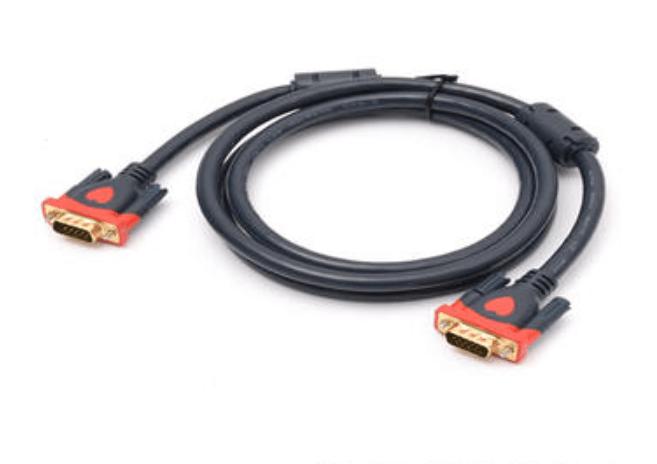
ما هو أفضل HDMI Switch أو Splitter؟
لقد أحدثت تقنية HDMI ثورة في طريقة توصيلنا ونقلنا للإشارات السمعية والبصرية. ومع تزايد عدد الأجهزة والشاشات في منازلنا وأماكن عملنا، أصبح من الضروري فهم الاختلافات بين مفاتيح ومقسمات HDMI لتحديد الحل الأنسب لاحتياجاتك.
تهدف هذه المقالة إلى استكشاف نقاط القوة والتطبيقات المثلى لمفاتيح ومقسمات HDMI، لمساعدتك على اتخاذ قرار مستنير.
تهدف هذه المقالة إلى استكشاف نقاط القوة والتطبيقات المثلى لمفاتيح ومقسمات HDMI، لمساعدتك على اتخاذ قرار مستنير.
مقدمة حول مفتاح HDMI
مفتاح HDMI هو جهاز يسمح لك بتوصيل مصادر HDMI متعددة بشاشة واحدة. فهو يلغي الحاجة إلى تبديل الكابلات باستمرار من خلال توفير آلية تبديل بسيطة. عندما تريد تغيير مصدر الإدخال، يسهل مفتاح HDMI الانتقال السلس دون أي فقدان لجودة الإشارة.
تتعدد فوائد استخدام مفتاح HDMI. أولاً، يعمل على تبسيط عملية الاتصال وإدارة الكابلات من خلال تقليل فوضى الكابلات المتعددة. ثانيًا، يوفر مفتاح HDMI المرونة في التبديل بين مصادر الإدخال المتعددة، مما يجعله مثاليًا للمنازل أو المكاتب التي تحتوي على أجهزة وسائط متعددة. أخيرًا، يعمل على تحسين جودة الصوت والفيديو من خلال دعم أحدث معايير وتقنيات HDMI.
تُستخدم مفاتيح HDMI بشكل شائع في أنظمة الترفيه المنزلي، حيث تسمح للمستخدمين بتوصيل وحدات التحكم في الألعاب ومشغلات Blu-ray وأجهزة البث بجهاز تلفزيون أو جهاز عرض واحد. كما تحظى بشعبية كبيرة بين اللاعبين، حيث تمكنهم من التبديل بين وحدات التحكم في الألعاب المختلفة بسهولة.
بالإضافة إلى ذلك، تُستخدم مفاتيح HDMI على نطاق واسع في البيئات السمعية والبصرية الاحترافية، مثل غرف المؤتمرات والاستوديوهات، حيث يتعين عرض مصادر متعددة على شاشة واحدة أو جهاز عرض.
تتعدد فوائد استخدام مفتاح HDMI. أولاً، يعمل على تبسيط عملية الاتصال وإدارة الكابلات من خلال تقليل فوضى الكابلات المتعددة. ثانيًا، يوفر مفتاح HDMI المرونة في التبديل بين مصادر الإدخال المتعددة، مما يجعله مثاليًا للمنازل أو المكاتب التي تحتوي على أجهزة وسائط متعددة. أخيرًا، يعمل على تحسين جودة الصوت والفيديو من خلال دعم أحدث معايير وتقنيات HDMI.
تُستخدم مفاتيح HDMI بشكل شائع في أنظمة الترفيه المنزلي، حيث تسمح للمستخدمين بتوصيل وحدات التحكم في الألعاب ومشغلات Blu-ray وأجهزة البث بجهاز تلفزيون أو جهاز عرض واحد. كما تحظى بشعبية كبيرة بين اللاعبين، حيث تمكنهم من التبديل بين وحدات التحكم في الألعاب المختلفة بسهولة.
بالإضافة إلى ذلك، تُستخدم مفاتيح HDMI على نطاق واسع في البيئات السمعية والبصرية الاحترافية، مثل غرف المؤتمرات والاستوديوهات، حيث يتعين عرض مصادر متعددة على شاشة واحدة أو جهاز عرض.
مقدمة عن موزع HDMI
من ناحية أخرى، يتيح لك موزع HDMI عرض نفس المحتوى السمعي البصري على أجهزة إخراج متعددة في نفس الوقت. فهو يأخذ مصدر HDMI واحدًا ويكرر الإشارة إلى شاشات متعددة. وهذا مفيد بشكل خاص عندما تريد عرض المحتوى في مناطق مختلفة أو عندما يحتاج العديد من المشاهدين إلى الوصول إلى نفس مصدر الفيديو.
تتضمن مزايا استخدام موزع HDMI العرض المتزامن على أجهزة إخراج متعددة، مثل أجهزة التلفاز أو أجهزة العرض أو الشاشات. ويضمن ذلك أن يتمكن كل شخص في الغرفة من رؤية المحتوى دون الحاجة إلى كابلات أو إعدادات إضافية.
تحافظ موزعات HDMI أيضًا على جودة إشارات الصوت والفيديو، مما يوفر نفس تجربة الوضوح العالي لكل شاشة متصلة. علاوة على ذلك، فهي متوافقة مع إعدادات الشاشات المتعددة، مما يسمح لك بتوسيع سطح المكتب أو إنشاء بيئة لعب غامرة.
يتم استخدام مقسمات HDMI بشكل شائع في اللافتات الرقمية وشاشات الإعلانات، حيث يلزم بث نفس المحتوى عبر شاشات متعددة.
كما تُستخدم على نطاق واسع في غرف المؤتمرات والفصول الدراسية، مما يضمن أن تكون العروض التقديمية أو المواد التعليمية مرئية لجميع المشاركين. بالإضافة إلى ذلك، تستخدم غرف المراقبة والتحكم مقسمات HDMI لعرض المعلومات المهمة على شاشات متعددة لاتخاذ القرارات الفعّالة.
تتضمن مزايا استخدام موزع HDMI العرض المتزامن على أجهزة إخراج متعددة، مثل أجهزة التلفاز أو أجهزة العرض أو الشاشات. ويضمن ذلك أن يتمكن كل شخص في الغرفة من رؤية المحتوى دون الحاجة إلى كابلات أو إعدادات إضافية.
تحافظ موزعات HDMI أيضًا على جودة إشارات الصوت والفيديو، مما يوفر نفس تجربة الوضوح العالي لكل شاشة متصلة. علاوة على ذلك، فهي متوافقة مع إعدادات الشاشات المتعددة، مما يسمح لك بتوسيع سطح المكتب أو إنشاء بيئة لعب غامرة.
يتم استخدام مقسمات HDMI بشكل شائع في اللافتات الرقمية وشاشات الإعلانات، حيث يلزم بث نفس المحتوى عبر شاشات متعددة.
كما تُستخدم على نطاق واسع في غرف المؤتمرات والفصول الدراسية، مما يضمن أن تكون العروض التقديمية أو المواد التعليمية مرئية لجميع المشاركين. بالإضافة إلى ذلك، تستخدم غرف المراقبة والتحكم مقسمات HDMI لعرض المعلومات المهمة على شاشات متعددة لاتخاذ القرارات الفعّالة.
العوامل التي يجب مراعاتها عند الاختيار
عند الاختيار بين مفتاح HDMI ومقسم، يجب أخذ العديد من العوامل في الاعتبار:
●جودة الإشارة والتدهور
ضع في اعتبارك المسافة بين المصدر والشاشات، حيث إن طول الكابلات قد يؤدي إلى تدهور الإشارة. وقد تتطلب أجهزة التوزيع تضخيم الإشارة للحصول على الأداء الأمثل.
●التوافق مع الأجهزة والدقة
تحقق مما إذا كان المفتاح أو الموزع يدعم الدقة وتنسيقات الصوت الخاصة بمصادر الإدخال وأجهزة الإخراج لديك.
●عدد مصادر الإدخال وأجهزة الإخراج
قم بتحديد الحد الأقصى لعدد الأجهزة التي تحتاج إلى توصيلها وعدد الشاشات التي تريد عرض المحتوى عليها.
●حدود طول الكابل
تحتوي كابلات HDMI على قيود على الطول، لذا تأكد من أن المفتاح أو الموزع يمكنه استيعاب طول الكابل المطلوب لإعدادك.
●اعتبارات الميزانية والتكلفة
قم بتقييم تكاليف المفاتيح أو المقسمات، مع الأخذ في الاعتبار متطلباتك المحددة والميزات التي تقدمها.
كيفية تحديد أي واحد يجب عليك استخدامه؟
لاختيار حل HDMI المناسب، اتبع الخطوات التالية:
●فهم متطلباتك المحددة وحالة الاستخدام
تحديد عدد مصادر الإدخال وأجهزة الإخراج، والمسافة بينها، والوظيفة المطلوبة.
●تقييم إيجابيات وسلبيات مفاتيح ومقسمات HDMI
قم بالنظر في مزايا وعيوب كل حل بناءً على احتياجاتك المحددة.
●اعتبارات قابلية التوسع والتوسع المستقبلي
إذا كنت تتوقع إضافة المزيد من الأجهزة أو الشاشات في المستقبل، فتأكد من أن الحل الذي اخترته قادر على استيعاب التوسع المستقبلي.
●اطلب المشورة أو الاستشارة المهنية إذا لزم الأمر
إذا لم تكن متأكدًا من الخيار الأفضل لإعدادك، فاستشر متخصصين في مجال السمعيات والبصريات الذين يمكنهم تقديم إرشادات متخصصة بناءً على متطلباتك.
خاتمة
باختصار، تخدم مفاتيح ومقسمات HDMI أغراضًا مختلفة وتوفر مزايا فريدة.
عند الاختيار بين مفتاح HDMI وموزع، ضع في اعتبارك عوامل مثل جودة الإشارة والتوافق وعدد مصادر الإدخال وأجهزة الإخراج وحدود طول الكابل وميزانيتك. من خلال فهم متطلباتك المحددة وتقييم إيجابيات وسلبيات كل حل والتفكير في قابلية التوسع وطلب المشورة المهنية عند الحاجة، يمكنك اتخاذ قرار مستنير.
عند الاختيار بين مفتاح HDMI وموزع، ضع في اعتبارك عوامل مثل جودة الإشارة والتوافق وعدد مصادر الإدخال وأجهزة الإخراج وحدود طول الكابل وميزانيتك. من خلال فهم متطلباتك المحددة وتقييم إيجابيات وسلبيات كل حل والتفكير في قابلية التوسع وطلب المشورة المهنية عند الحاجة، يمكنك اتخاذ قرار مستنير.







اترك تعليقا